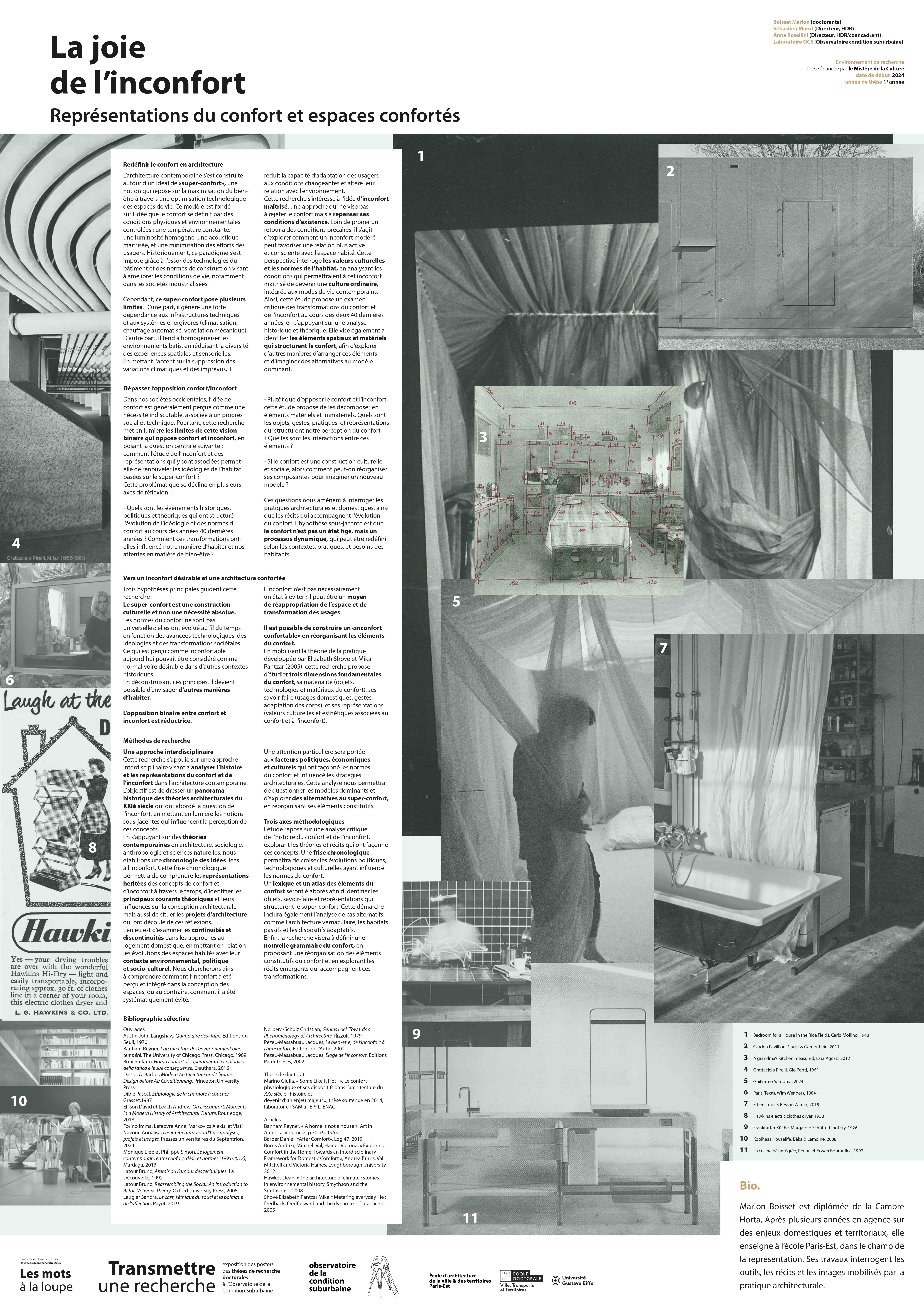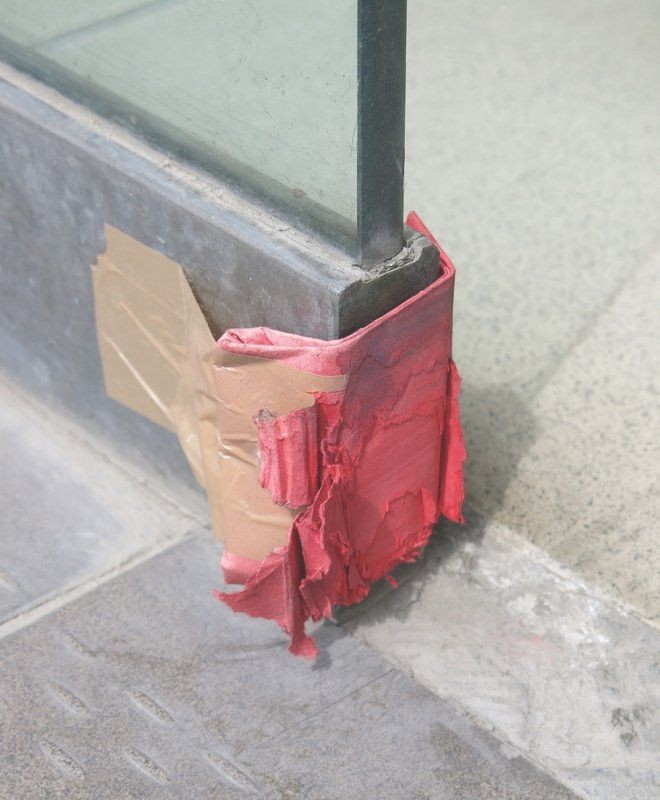Marion Boisset
The joy of discomfort
Representations of comfort and comfortable spaces
Rarely questioned, the desirability of architectural “comfort” is widely accepted. This “comfort” is historically the product of cultural, technical, and ethical representations that are as invisible as they are unthought-of. Yet comfort is like time in Saint Augustine's words: “If no one asks me what it is, I know what it is; but if I am asked and I want to explain it, I no longer know.” Formed in the Anglo-Saxon matrix of the industrial bourgeoisie, the idea of “comfort” has had a lasting impact on the work of architects and the experience of inhabitants by imposing a territory polarized by a logically sterile and tautological paradigm, since comfort and discomfort are defined in relation to each other. This vision, although widely accepted, is based on anachronistic standards of super-comfort that shape our expectations and our imagination of what a home should be.
This imaginary sedimentation would be of little importance if it did not produce large-scale performative effects. It is not just a question of clarifying the conceptual genealogy of comfort, but of rethinking an ethics and materiality adapted to a world damaged by the Anthropocene, resource depletion, and climate change. Current norms and expectations continue to adhere to a past ideology, idealizing a technophile super-comfort that raises the question: Can we explore other forms of discomfort that would be in line with a contemporary ethic, in which designing requires caring?
This research aims to inventory and understand the qualities and potential benefits of discomfort, understood not as deprivation or absence of comfort, but as a departure from an outdated paradigm. We will draw on contemporary 21st-century theories while also drawing on a broad historical spectrum. Anchored in the present, our approach thus aims to reconstruct a critical history of discomfort, a chronology, through the theories that have emerged in recent decades.
This is an effort to shift a notion that leads to frustration with a super comfort that is never achieved, to the overkill of technophile control systems, towards a set of design tools capable of shaping a new ideal of well-being in the home. Moving from acceptable comfort to accepted well-being: living not comfortably but confidently, in architecture where occupants are active participants in the creation of their own comfort.
- Research framework
◖ Thesis supervisor
Sébastien Marot (HDR)
OCS laboratory, Ensa Paris-Est
Anna Rosellini (since 2024)
OCS laboratory, Ensa Paris-Est
◖ PhD framework
2025-in progress
Thesis under doctoral contract from the French Ministry of Culture
◖ Research environment
OCS Laboratory
AUSser joint research unit
About research
◖ Keywords
comfort, discomfort, habitat, domesticity, representation
◖ Scientific poster

-
Illustration →
Richard Wentworth, Untitled, 2015
